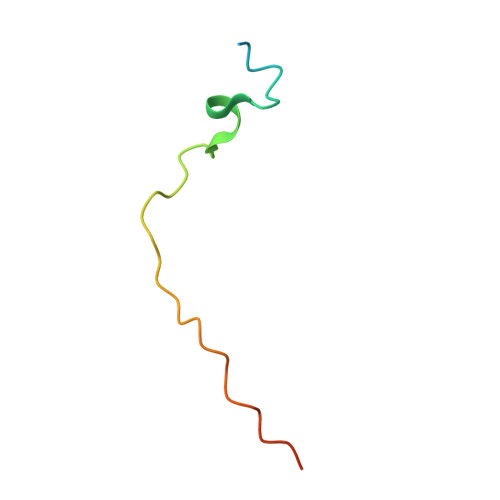Insights into COPII coat nucleation from the structure of Sec23.Sar1 complexed with the active fragment of Sec31.
Bi, X., Mancias, J.D., Goldberg, J.(2007) Dev Cell 13: 635-645
- PubMed: 17981133
- DOI: https://doi.org/10.1016/j.devcel.2007.10.006
- Primary Citation of Related Structures:
2QTV - PubMed Abstract:
The COPII vesicular coat forms on the endoplasmic reticulum from Sar1-GTP, Sec23/24 and Sec13/31 protein subunits. Here, we define the interaction between Sec23/24.Sar1 and Sec13/31, involving a 40 residue Sec31 fragment. In the crystal structure of the ternary complex, Sec31 binds as an extended polypeptide across a composite surface of the Sec23 and Sar1-GTP molecules, explaining the stepwise character of Sec23/24.Sar1 and Sec13/31 recruitment to the membrane. The Sec31 fragment stimulates GAP activity of Sec23/24, and a convergence of Sec31 and Sec23 residues at the Sar1 GTPase active site explains how GTP hydrolysis is triggered leading to COPII coat disassembly. The Sec31 active fragment is accommodated in a binding groove supported in part by Sec23 residue Phe380. Substitution of the corresponding residue F382L in human Sec23A causes cranio-lenticulo-sutural dysplasia, and we suggest that this mutation disrupts the nucleation of COPII coat proteins at endoplasmic reticulum exit sites.
Organizational Affiliation:
Howard Hughes Medical Institute and the Structural Biology Program, Memorial Sloan-Kettering Cancer Center, 1275 York Avenue, New York, NY 10021, USA.



















